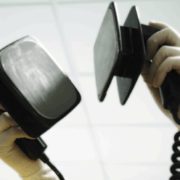Covid-19: A Hard Reset For Business
Much like when your computer stalls and “fingers-crossed” you unplug it from the wall and plug it back-in, Covid-19 is forcing the global economy into a hard reset. In this article we will discuss two phases that some if not most business will go through during this pandemic hard reset. Make sure to discuss these ideas with your CPA and financial advisors.
Phase 1 – Survival
One of the most important things to focus on during uncertain times is cash flow both current and projected.
Identify the important cash flow priorities of your business such as employees, customers, landlord, lenders, vendors, shareholders, etc. Keep in mind that the ultimate goal is to return to normal business at some point in the future and it would be useful to maintain these priority relationships.
As you live and breath your cash flow everyday, you may come into a cash flow deficit situation. Before throwing in the towel, make sure you explore alternative solutions for cash flow issues such as:
- SBA Loans (i.e. PPP, EIDL, etc.)
- Payroll Tax Credits
- Deferring Payments for Certain Payroll and Sales Taxes
- Negotiating installment agreements to cover past due payables or taxes
- Equity infusion
If these solutions aren’t working for you and your cash flow is continuing into a deficit, there are other options such as cancellation of debt or closing the business. However, please keep in mind that these options can trigger taxable income, cause serious damage to the credit of the business and its owners and take years to resolve. So, let’s stay in business and Rebuild!
Phase 2 – Rebuild
As the government slowly rolls out phases to re-open the economy it will be like a re-birth for some businesses. It is best to take this time to establish successful cash flow plans. Here is a sample of how to envision your cash flow and create a detailed plan and projection.
- Make Money – Create cash inflow from Net Income, contributed capital, etc (non debt obligations – see next note)
- Pay off Debt – Once the business is making money with positive cash inflow you can build a strong balance sheet by paying off debts. There are scenarios where debts are adequately-leveraged or debt is necessary, etc etc but a simple goal for your balance sheet could be Assets = Equity
- Save Money – Some people advise to save money as you pay off debt, and others suggest to pay of the debt first because debt typically costs more than the earnings from savings….either way, Save Money.
- Invest Money – Once you have paid off your debt and you have adequate savings, then you can invest in your business, such as PP&E, retirement plans, Reasearch & Development, etc.
As you create your various cash flow plans and projections, experiment with different ideas and what-if scenarios to create a range or metric for additional ways to measure future performance.
If you have any questions, please reach out and we can talk more about this and any other questions for you or your business. Info@mrarrachecpa.com or (949) 877-3143 (local) or (800) 425-0570 (toll-free).
Written by: Michael Arrache, CPA, EA (Newport Beach, CA)


